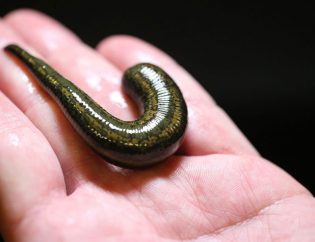Leeches are hematophagous, which means they feed on blood. While many people associate leeches with human blood, they actually feed on the blood of a variety of hosts, including mammals, birds, reptiles, amphibians, and fish. Some species of leeches are also predators, feeding on other invertebrates.
Leeches have specialized mouthparts that are adapted for feeding on blood. Their mouth contains three jaws, each with a row of sharp teeth. The jaws are used to slice through the skin of their host, while the teeth help to anchor the leech in place. Once the leech has attached to its host, it begins to suck blood through its mouth.
Leeches have a number of adaptations that help them to feed on blood. For example, they produce an anticoagulant called hirudin, which prevents the blood from clotting and allows the leech to feed for a longer period of time. They also have a unique digestive system that is able to process large amounts of blood quickly.
While leeches are often thought of as parasites, they can actually play an important role in many ecosystems. For example, leeches that feed on fish may help to control populations of invasive fish species. In addition, leeches that feed on the blood of sick animals may help to remove pathogens from the host’s bloodstream, potentially reducing the spread of disease.
In conclusion, leeches eat blood and have specialized adaptations for feeding on their hosts. While they are often thought of as parasites, they can also play an important role in many ecosystems. Understanding the feeding habits of leeches can help us better appreciate the diversity of life on our planet.
This article explains what do leeches eat and how to they feed




